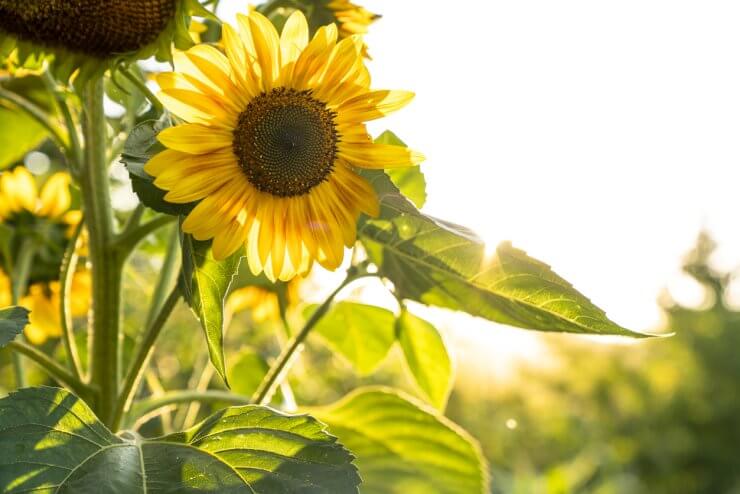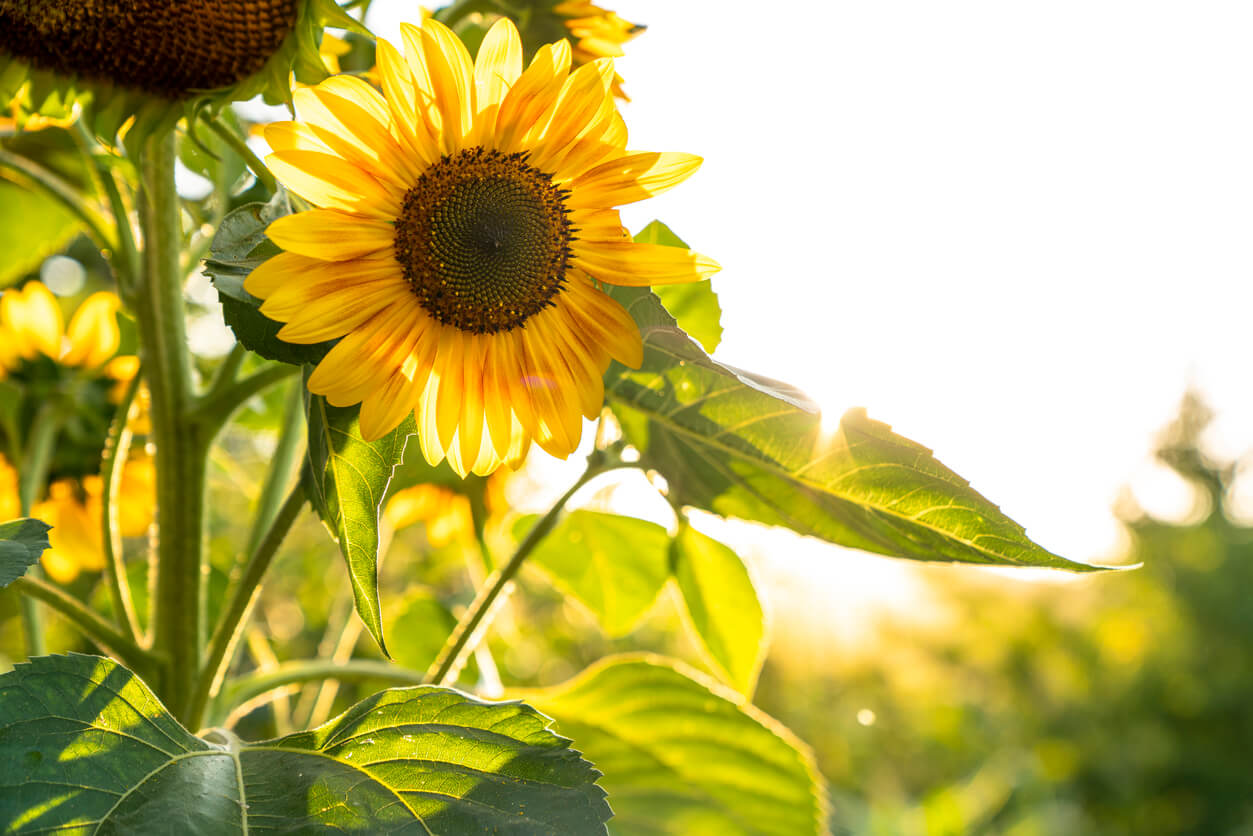
Sunflower blooming in the garden

Sunflower blooming in the garden
Sunflowers are one of the most cheerful plants on the planet. How can you not smile when you see a field of bright sunflowers waving in the breeze? Some sunflowers make great cut flowers for floral arrangements. The giant varieties are the ones that produce the most seeds and are most suitable for eating.
Sunflowers are easy to grow, easy to harvest, and delicious to eat! Their official name is Helianthus annuus—annuus meaning annual. Most edible, or culinary, sunflowers are annuals; perennial sunflowers are usually grown more for show.
You can eat more than just the seeds of a sunflower; in some cases, you can eat the entire sunflower! The heads of both single-headed and branching sunflowers can make for a tasty grilled or roasted treat. But if you have your heart set on home-roasted sunflower seeds, you’ll want to plant single-headed sunflowers with their big, bold, seed-packed heads.
Now, we look at a sunflower and see just that: a flower. But in reality, sunflowers are more like a huge colony of flowers. Those big petals ringing the sunflower? Those are ray flowers, or ray petals. That beautiful, bright disc in the middle? It’s packed with hundreds of tiny disc flowers, each of them growing from the tip of a sunflower seed.
Sunflower science
You’ll often hear that sunflowers are heliotropic—that they follow the sun. Is that really so? Well, yes and no. Reaching for the sun is part of photosynthesis, turning sunlight into energy, which plants need to survive. You will, indeed, notice some growing sunflowers turning their heads toward the sun and tracking it across the sky. But once the flowers are fully formed, they lock into position and they all face east. Check it out the next time you visit a sunflower field.
Sunflowers tend to take less from the soil than they leave behind. With their deep taproots, sunflowers can pull toxins out of contaminated soil, including heavy metals and radioactive waste. When sunflowers draw up toxins from the soil, they store them in the plant’s stem and leaves. After the Chernobyl nuclear power plant disaster in 1986, sunflowers were planted in an effort at phytoremediation—using plants to clean up the environment. More recently, a phytoremediation company has used floating rafts of sunflowers to clean up radioactive water around Chernobyl. Once the plants have done their work, they’re disposed of as radioactive waste.
If you examine a sunflower head after you’ve rubbed off all the little disc flowers, you’ll notice that the seeds have grown in spirals out from the center, going both clockwise and counterclockwise. If you count the spirals in each direction, you are likely to find that the numbers are part of the Fibonacci sequence—a mathematical sequence in which each subsequent number is the sum of the two numbers before it. This sequence (1, 2, 3, 5, 8, 13, 21, 33, etc.) is evident throughout nature, both on land and sea. Take a close look at a snail shell or a nautilus shell, and you’ll see the same spiral pattern.
Fun Facts:
- A sunflower head is 75% water.
- Dried sunflower stalks can work as garden stakes or kindling.
- Even pollenless sunflowers attract bees and butterflies because of the nectar the disc flowers produce.
A brief history of sunflowers

Sunflowers harvested in a basket
Sunflowers are native to North America. The native peoples of the continent used sunflowers as a food source for thousands of years before explorers came to the shores. Researchers think people started cultivating sunflowers about 5,000 years ago in the region that is now Arizona and New Mexico, and about 2,000 years ago in what is now the Midwest.
Spanish explorers took sunflower seeds back to Europe with them in the 1500s. For a long time, sunflowers were grown in Europe solely for their ornamental value. Eventually, botanists discovered the rich value of black sunflower seeds, packed with oil and protein. Russian farmers grew sunflowers for their oil, since the climate was too cold to grow olives. Sunflower production in Russia and Ukraine grew in the 1800s, and the region became very well known for its sunflower oil. In fact, the sunflower is the national emblem of Ukraine, acknowledging the flower’s importance to the country. For decades, Ukraine has been the world’s leading exporter of sunflower oil.
Commercial production of sunflower oil got a slightly later start in the United States. The U.S. commercial sunflower industry began in Missouri in 1926. Today, American growers plant over a million acres of sunflowers every year to produce sunflower oil.
Did you know this fascinating history of sunflowers? Please tell us anything interesting you know about the background or history of sunflowers by commenting below.



